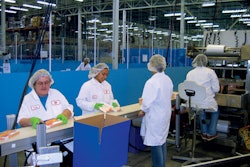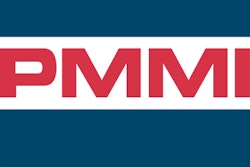But, as offshore sourcing becomes more common for consumer goods companies, it changes the odds for success. With offshore sourcing, last minute approaches carry with them even greater potential for errors, poorly packaged products, and disrupted timelines.
Under that scenario, it is more important that packaging development gets involved in the product development process early. Setbacks that are costly both in time and money can be created if packaging is delayed and interferes with product launch timelines.
Here are some steps that can be critical to successfully develop packages that will be produced overseas.
1. Maintain control of the packaging development process domestically. You maintain better control when you create, develop, and modify the packaging domestically rather than letting an overseas partner do it. To be successful in the process, packaging engineers should be part of the team that accounts for all the attributes and functions that have to be present in the final package.
That team has to include marketing people. It needs to include creative staff that are developing graphics or packaging shape. The team also has to encompass operations and logistics people, too. A key is that someone on that team has to know just what the overseas vendor's capabilities are.
Developing domestically gives you more control of timelines and the ability to revise and improve packaging concepts. It's the strategy we as packaging professionals stress often—start early, and modify or refine packaging designs as much as necessary during these early stages. If that tactic is important to developing good packaging that is being produced domestically, then it is even more important when the packaging is produced overseas.
2. Develop prototypes domestically. Touch, feel, and see models of the final package. Many companies now prototype their packaging designs before starting offshore production. Rapid prototyping capabilities are available in many areas. Examples include prototyping molds for thermoforms or solid models for rigid packaging.
When a prototype is produced domestically, packaging modifications are easily identified and adjustments can be made quickly. The touch, feel and 3D look of prototypes reveal attributes you just can't determine in drawings.
When you have finalized the prototypes, send them to the offshore manufacturer for replication into production packaging. Prototypes are an effective way to communicate with overseas vendors. You may get the best results with a combination of detailed solid models and prototypes. And yes, there are some instances where flat drawings adequately convey the information needed.
Utilizing domestic resources can help ensure that packaging exhibits consistent and accurate brand communications, product display needs, and sufficient product protection. Frequently, retailers want to see new product offerings in the actual packaging. Retailers have a stake in what the package looks like and the high-quality image it presents. Having a prototype for the retail buyer communicates those package attributes in a way a drawing cannot.
3. Provide detailed documentation. Communicating to the offshore vendor is critical if you want to create consistent packages. You need to use file types your overseas partner can handle. Know what the vendor's capabilities are and what files work best. We have found that .pdf files are almost universal. As long as you are dealing with flat images and data, .pdf files help assure that information is delivered and communicated in the best format possible.
Make sure that documentation includes material and performance specifications, packaging dimensions, and distribution packaging. Include specifications on testing, shipping, and logistics. Be ready to make the 9 p.m. phone calls overseas to coordinate details. These elements provide a thorough and complete foundation for a successful product launch.
About the Author: Jake Streich, CPP, is a packaging engineer for Adalis Corp., a global packaging consulting firm. He is responsible for packaging research, development, and testing for the medical device, consumer electronics, and building materials industry. Jake is a member of the Minnesota IoPP chapter and the IoPP Medical Device Packaging Committee.
He will be presenting his insights on overseas packaging development at The Packaging Summit Conference 2006 in May.
For information about IoPP,visit www.iopp.org



























